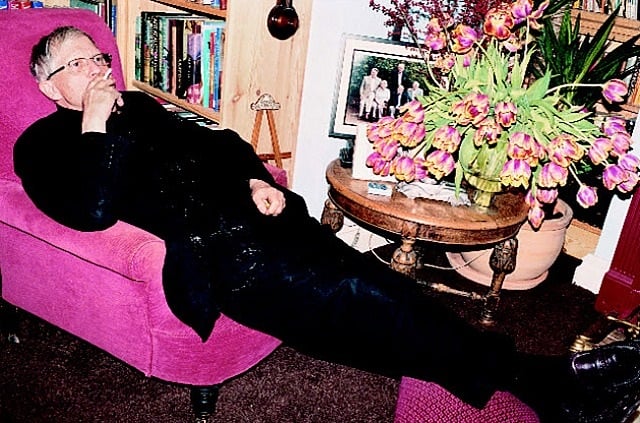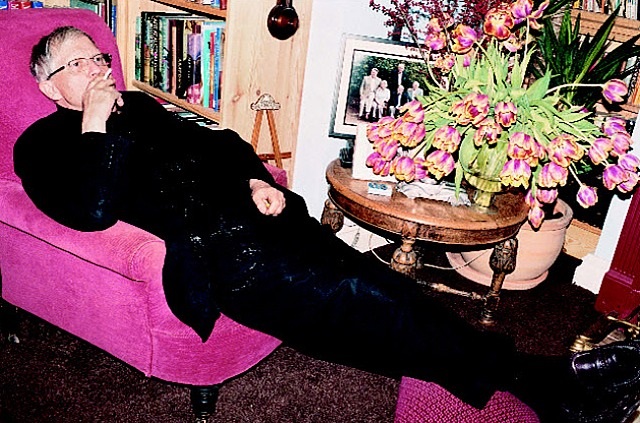People
5 Surprising Facts About David Hockney on His Birthday
The influential British artist turns 78 today.

Photo: Courtesy of artnet.
The influential British artist turns 78 today.

Lauren Palmer


David Hockney.
Photo: via the Independent.
Crowned the “Most influential British artist” in 2011, the ever-outspoken David Hockney turns 78 on July 9.
Known for his bright, Southern California poolside views and the Cubist photo collages he referred to as “joiners,” Hockney cultivated his talent from an early age. To celebrate, here are five facts about the versatile artist’s life and work.
1. He is a Whitman fan.
As a lover of literature, Hockney’s earliest pieces reveal the influence of poetry on his audaciously homoerotic paintings. Walt Whitman is a significant source: We Two Boys Together Clinging (1961) has the title line painted over the contours of two figures embracing and Myself and My Heroes (1961) shows the poet in the company of both Hockney and Mahatma Gandhi. C.P. Cavafy and Wallace Stevens have also served as inspirations, while writers Christopher Isherwood, Stephen Spender, and W.H. Auden all sat for the artist.

David Hockney, Beverly Hills Housewife (diptych) (1966-67).
Photo: Courtesy of Hockney Pictures
2. He sold his first painting for £10.
Although his work now commands heftier sums, Hockney’s first painting sold for mere £10. Portrait of My Father (1955) was shown at a regional art fair in Leeds with no price set, but then an unexpected potential buyer appeared. According to the Smithsonian Magazine, before the sale was complete, the artist wanted to clear the transaction with his father first; the subject of the piece encouraged his son to take the offer, stating that he could always “do another.”
3. He has a theory named after him.
The Hockney-Falco Thesis is a speculative collaboration between the artist and physicist Charles M. Falco. Fascinated by the Old Masters, Hockney wrote a book where he argues that optical aids were used to gain the high level of detail found in Renaissance artworks. His suppositions were published in Secret Knowledge: Rediscovering the Lost Techniques of the Old Masters, which served as an inspiration for the recent documentary film, Tim’s Vermeer, where the inventor Tim Jenison sought to replicate Vermeer’s technique based on Hockney’s hypothesis.

Jurgen Teller, David Hockney Smoking Bridlington (2008).
Photo: Courtesy of artnet.
4. He’s a proud smoker.
Hockney has been vocal about his opposition to enforced smoking bans worldwide. Proclaiming in The Guardian back in 2007 that the newly-instated ban is detrimental and that he “smokes for [his] mental health,” Hockney continues to enjoy the his cigarettes, regardless of public approval.

David Hockney’s set design for Act II of Tristan und Isolde.
Photo: Courtesy of the Huffington Post.
5. He may have synesthesia.
The artist, who has also created colorful sets for operatic productions in the United States and beyond, may also have been born with synesthesia. This cognitive ability to perceive sounds, colors, and/or words through two or more senses simultaneously is the same condition that supposedly led Wassily Kandinsky to paint his vibrant, symphonic abstractions.